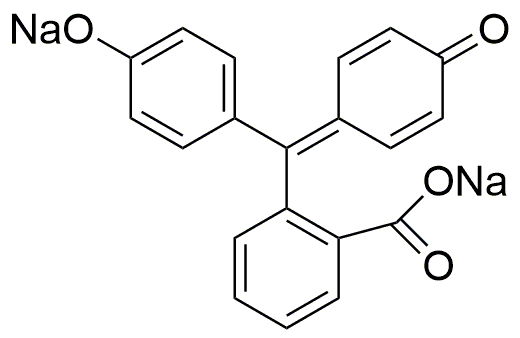Phenolphthalein disodium salt is widely utilized in research focused on:
- pH Indicator: Commonly used in titrations, it provides a clear visual change from colorless to pink, making it easy to determine the endpoint of an acid-base reaction.
- Pharmaceutical Applications: Employed in the formulation of laxatives, it helps in diagnosing gastrointestinal issues due to its ability to indicate pH changes in the digestive tract.
- Laboratory Research: Frequently used in chemical experiments to study reaction kinetics and equilibrium, allowing researchers to monitor changes in acidity or alkalinity.
- Water Quality Testing: Utilized in environmental science to assess the pH levels of water samples, ensuring compliance with safety standards for drinking water.
- Educational Purposes: A staple in chemistry classrooms, it aids in teaching fundamental concepts of acid-base chemistry through hands-on experiments.
General Information
Properties
Safety and Regulations
Applications
Phenolphthalein disodium salt is widely utilized in research focused on:
- pH Indicator: Commonly used in titrations, it provides a clear visual change from colorless to pink, making it easy to determine the endpoint of an acid-base reaction.
- Pharmaceutical Applications: Employed in the formulation of laxatives, it helps in diagnosing gastrointestinal issues due to its ability to indicate pH changes in the digestive tract.
- Laboratory Research: Frequently used in chemical experiments to study reaction kinetics and equilibrium, allowing researchers to monitor changes in acidity or alkalinity.
- Water Quality Testing: Utilized in environmental science to assess the pH levels of water samples, ensuring compliance with safety standards for drinking water.
- Educational Purposes: A staple in chemistry classrooms, it aids in teaching fundamental concepts of acid-base chemistry through hands-on experiments.
Documents
Safety Data Sheets (SDS)
The SDS provides comprehensive safety information on handling, storage, and disposal of the product.
Product Specification (PS)
The PS provides a comprehensive breakdown of the product’s properties, including chemical composition, physical state, purity, and storage requirements. It also details acceptable quality ranges and the product's intended applications.
Certificates of Analysis (COA)
Search for Certificates of Analysis (COA) by entering the products Lot Number. Lot and Batch Numbers can be found on a product’s label following the words ‘Lot’ or ‘Batch’.
*Catalog Number
*Lot Number
Certificates Of Origin (COO)
This COO confirms the country where the product was manufactured, and also details the materials and components used in it and whether it is derived from natural, synthetic, or other specific sources. This certificate may be required for customs, trade, and regulatory compliance.
*Catalog Number
*Lot Number
Safety Data Sheets (SDS)
The SDS provides comprehensive safety information on handling, storage, and disposal of the product.
DownloadProduct Specification (PS)
The PS provides a comprehensive breakdown of the product’s properties, including chemical composition, physical state, purity, and storage requirements. It also details acceptable quality ranges and the product's intended applications.
DownloadCertificates of Analysis (COA)
Search for Certificates of Analysis (COA) by entering the products Lot Number. Lot and Batch Numbers can be found on a product’s label following the words ‘Lot’ or ‘Batch’.
*Catalog Number
*Lot Number
Certificates Of Origin (COO)
This COO confirms the country where the product was manufactured, and also details the materials and components used in it and whether it is derived from natural, synthetic, or other specific sources. This certificate may be required for customs, trade, and regulatory compliance.


